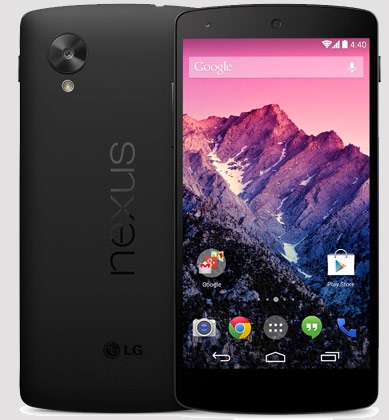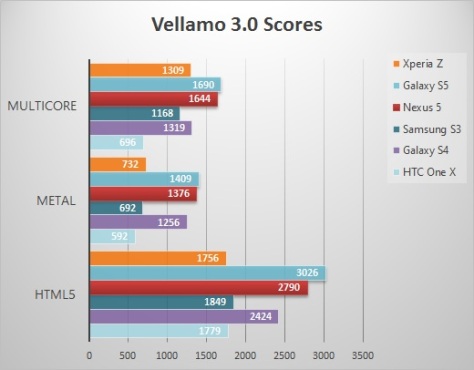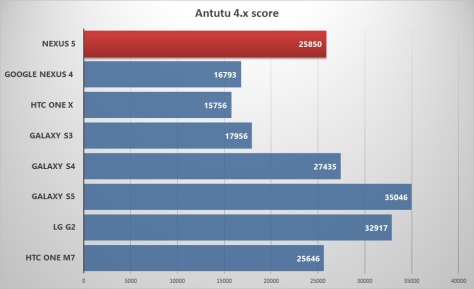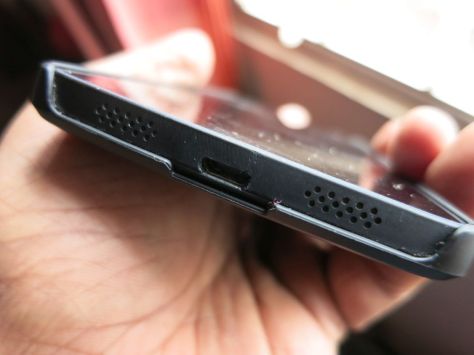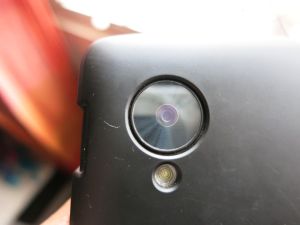Buying an Android phone has become very complicated as you see the number of models, and the marketed features. However for “smart” buyer a phone that is good enough in most areas is sufficient as long as the latest Android build is available quickly, and the device is well supported for a few years with Android updates, and incorporate a solid hardware configuration.
This has been the area the Google Nexus range of phones have been targeted, and add the fact that the device is usually released featuring the best hardware for an absolute great price has made it a very attractive (albeit hard to get outside the US, and not cheap outside the ?US) device.
I had the Nexus 4 twice, and found the simplicity and great updates to be an attractive offering, but the camera was a major let down. This kept me away from the Nexus 5 for a while, but I finally took the dip, and knew it was going to be hard one as it replaced the Lumia 1020 which had an amazing camera!
One thing I am finding more and more as a recycle my phones every 1-2 months, is that the “innovation” to be very very minimal, and it is really more of what you like in a phone in design or what you like in the form of “software tweaks” marketed by the phone vendors. For many most mid-range or better smartphones should do well.
The design
The Nexus 5 one might say has nothing special when it comes to the external design of the phone. Unlike the Nexus 5, the back has no glass cover, and has a soft matte type plastic that is very nice to hold, similar to the Nokia Lumia phones. The side bezels is very thin, but the bezel at the top and specially at the bottom are large.
The weight of the phone is super, at 130g its not to heavy and not light making it near ideal in the weight department. It may be simple, but it’s a design that will work for most (does for me), though Google seems to be trying a bit to copy the Lumia range as they are planning an yellow edition of the Nexus 5!
The display
The Nexus 5 features a FullHD (1080×1920 pixel) 4.95″ IPS+ screen protected by a Gorilla Glass 3 layer. The display is very good, and with the high pixel count the display is very sharp, and a thing I liked was the colors, which are very similar to my experience with the HTC displays I liked so much. The touch is very good and you rarely have any complaints when using the device.
The hardware and performance
The Nexus 5 was released with cutting edge configuration as at 2013, featuring the Qualcomm Snapdragon 800 (Quad-core 2.3Ghz Krait 400) paired with an Aderno 330 GPU. The hardware still remains a very powerful unit as the newer releases by Samsung, Sony, HTC, LG in early 2014 featured the slightly tweaked Snapdragon 801 (which had a slightly more powerful processor, and a mildly higher clocked GPU). A few benchmarks to show you where it stands against the currently leading phones in 2014.
Vellamo 3.0
The HTML 5 browser test shows that Chrome performance is at the very top, only outdone by the newer Galaxy S5 (Samsung is known for their highly optimized browser performance, and as you would note the Galaxy S4 has done well on this test).
The hardware test has it nearly the same as the Galaxy S5, indicating there is very little to differentiate between the Snapdragon 800 and 801 on computational aspects. You also see how much faster the Snapdragon 800 family is compared to the flagships 2 years ago (the HTC One X and the Galaxy S3) and last year’s top dogs the Galaxy S4 and the Xperia Z. Vellamo 3.0 was released recently hence any form of vendor based tweaking to get better scores will not be in-effect making this an useful tool right now to see how phones compare on processing and web browsing scenarios.
Antutu 4.x
A highly popular benchmark and one that is known to be doctored (cheated) by mobile phone vendors who tend to shift the phone into the most optimized mode when this test is being run (Samsung, HTC, etc have been caught doing this, subsequently they have now stopped doing it in recent times).
The benchmark also takes a while to get optimized to the new Android builds, which has meant the Nexus range results are rarely accurate. Here again with Android 4.4.4 released very recently the scores seem to be not reflecting the correct performance of the Nexus 5. The test scores are show the Nexus 5 being more in the range of the older Snapdragon 600 phones (S4, HTC One M7) than with the Snapdragon 800/801 phones, which is not accurate (the sister phone LG G2 is showing far higher scores when they are practically identical in configuration). Also noticeable is that the Nexus 4 which is also a Snapdragon 600 based device is showing very poor results, so the pattern is evident, that the Nexus range completely avoids any kind of cheating when it comes to Antutu test!
Voice quality, Speakers and audio quality
The voice quality and clarity of the phone is excellent, that is when you use the earpiece.
However when it comes down to the loudspeaker mode the phone disappointed me. The speakers were rather feeble both on calls and music.
The bottom of the phone is where the speaker is found, and you may initially think it features a dual speaker setup, but turns out that only one of the grills has a speaker, the other is the microphone!
The audio out through the 3.5mm headset jack is also rather weak, if you want to listen to ear dropping music, this phone is not going to you. When I hooked it to my headphones I found the sound to be very low, and lacking the punch I have taken for granted with phones I have previously used.
Here is the audio test extracted from the popular phone portal GSMARENA.com, and you will see my observations matched by lab tests from this popular site. Yeah opinions matched by test results, rare 🙂 Interesting is that the sister phone the LG G2 also suffers with the same problem.
| Speakerphone test | Voice, dB | Pink noise/ Music, dB | Ringing phone, dB | Overal score |
| Sony Xperia Z | 60.1 | 58.3 | 61.6 | Below Average |
| LG G2 | 65.7 | 62.2 | 66.2 | Below Average |
| LG Nexus 5 | 65.0 | 64.8 | 65.8 | Below Average |
| HTC One | 69.3 | 66.6 | 75.9 | Good |
| Samsung I9505 Galaxy S4 | 70.6 | 66.2 | 77.3 | Good |
| LG Nexus 4 | 71.0 | 66.6 | 78.8 | Good |
| HTC One X | 65.1 | 66.0 | 75.8 | Average |
| Nokia Lumia 1020 | 69.8 | 66.6 | 72.5 | Good |
| Nokia Lumia 920 | 61.6 | 64.8 | 65.8 | Below Average |
| Samsung I9300 Galaxy S III | 75.1 | 66.5 | 75.0 | Good |
Camera
The Nexus 5 is a the Google version of the LG G2. The hardware is pretty near identical for the camera except that it feature a 8MP sensor as opposed to a 13MP in the G2. The Nexus 5 does include the optical image stabilization, a rare feature among Android presently (But to be quite common going forward). The OIS is not as advanced or effective as what is offered in the Nokia Lumia phones, but it’s superior to the software stabilization you see in many other phones.
The camera at the back looks very large, but in reality the sensor is the same size as what you find in most other phones (a 1/3.2″ sensor sourced from Sony, with a 1.4 micron pixel size), and the large circle a bit of marketing to highlight the existence of the optical image stabilization hardware it seems. Interestingly the photos from the Nexus 5 are far superior to the Sony Xperia Z, which has a similar sensor.
The image quality of the camera is very good, and it does decently under poor light (which is great considering the aperture of the lens is a f/2.4, when most rival cameras feature f/2.0 or 2.2, which is a big improvement over the Nexus 4 I used before. The flash is also quite powerful and helps get decent footage when shooting indoors. I used the HDR feature a lot, since the camera tends to loose some detail when you take the photos normally but where you can use HDR, the picture tend to be far more natural and detailed.
The video is smooth thanks to the stabilization and decent hardware, but you won’t find any of the high speed captures that you see with rival phones from Samsung, HTC, LG, etc as Google keeps it simple with 30fps at FullHD.
The Android camera application which was updated after Android 4.4.3 is simple but quite effective, and I really am amazed by the Photo Sphere feature, which allows you to get some amazing (amazing) panorama shots.
I also like the wide angle nature lens, a 30.4mm which in mobile phone terms is quite wide, with many others having only a 35mm or worse. You will appreciate the focal length when capturing landscapes, group photos, and when taking photos in a crammed space.
Android 4.4.3 onward however there is a bug with the camera application which causes it to simple crash when taking photos. There is no clear pattern on why this happens, and even after the Android 4.4.4 update, the problem still remains. It’s not very frequent, but it’s an annoying bug.
Variants
The Nexus 5 is sold in two forms one for the US market with the model code D820, and international version is the D821. The spec is identical, the only difference is the LTE bands supported. If you like me are using the Nexus 5 outside the US, and 4G LTE is not a major requirement, either model will do fine for you. If you like me live in south asia, and 4G is you desire, then seek out the D821!
The phone is also available in 16GB and 32GB internal storage sizes. Do note that the Nexus 5 just like all other Nexus phones has NO micro SD slot for expanding the storage.
| D820 | HSDPA 800 / 850 / 900 / 1700 / 1900 / 2100LTE 700 / 800 / 850 / 1700 / 1900 / 2100 / 2600 |
| D821 | HSDPA 850 / 900 / 1700 / 1900 / 2100LTE 800 / 850 / 900 / 1800 / 2100 / 2600 |
Conclusion
The Nexus 5 unlike the other all other Nexus 5 phones before, has fixed the biggest gripe, and now offers a very decent camera. The phone is simple and effective in its design, the performance is great, the display is very good, and the battery life adequate. For many this should be a great phone, and with Google ensuring this device will get several more updates this is a definitely a safe and solid buy. Just make sure you are fine with the low loudspeaker performance and poor headset audio quality!
Google’s Nexus strategy seems to be now showing signs of change with the new Android L launch said to also launch the Google silver range, where there will be multiple vendors who will launch phones with basic Android OS similar to the Nexus range. However this does not mean that support for Nexus phones is stopped, it just means that there is going to be many vanilla Android phones going forward and not just one vendor making it exclusively for Google.
